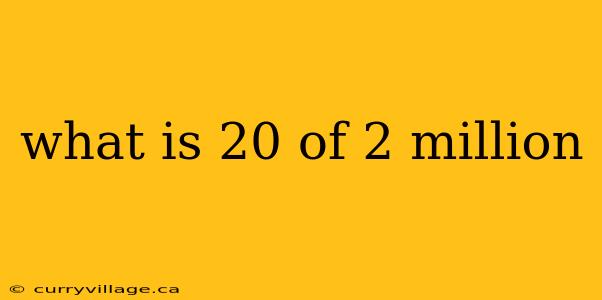What is 20/2,000,000? Understanding Percentages and Fractions
What is 20 out of 2 million? This question, seemingly simple, involves understanding fractions and percentages. Let's break it down step-by-step.
1. Expressing it as a Fraction:
The most straightforward way to represent "20 out of 2,000,000" is as a fraction: 20/2,000,000.
2. Simplifying the Fraction:
We can simplify this fraction by dividing both the numerator (20) and the denominator (2,000,000) by their greatest common divisor, which is 20:
20 ÷ 20 = 1 2,000,000 ÷ 20 = 100,000
This simplifies our fraction to 1/100,000.
3. Converting to a Percentage:
To express this as a percentage, we divide the numerator by the denominator and multiply by 100:
(1 ÷ 100,000) x 100 = 0.001%
4. Understanding the Result:
0.001% represents a very small proportion. Think of it this way: if you had 2,000,000 apples, only 20 would represent this tiny percentage. This illustrates just how small 20 is in comparison to 2 million.
Why is this calculation important?
Understanding how to calculate percentages and work with fractions like this is crucial in many areas, including:
- Finance: Calculating interest rates, returns on investment, and risk assessments often involve working with small percentages.
- Statistics: Analyzing data and interpreting results regularly requires calculating proportions and percentages.
- Science: Expressing experimental results or measuring concentrations frequently uses fractions and percentages.
- Everyday Life: Understanding sales discounts, tax rates, and tips often hinges on working with percentages.
In Summary:
20 out of 2,000,000 is equal to 1/100,000 or 0.001%. This represents a very small fraction or percentage. Mastering the ability to convert between fractions, decimals, and percentages is a fundamental skill with broad applications.
